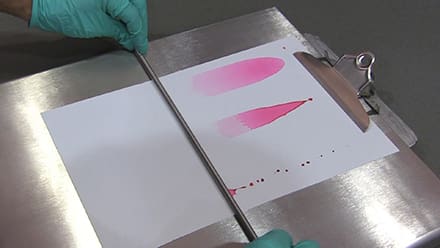Equistar leverages the benefits of atmospheric plasma surface treating
Equistar Chemicals LP, is one of the world’s largest producers of ethylene, propylene, and polyethylene resins. Its facilities have a combined annual capacity to produce more than 11 billion lb of ethylene and more than 5 billion lb of polyethylene, along with other specialty products such as ethyl vinyl acetate. So it’s not surprising Equistar’s…
Read MoreStop High Voltage Arcs Before They Cause Downtime
In corona treating, a high voltage arc occurs when the intended path of electrical current is disrupted because it finds an easier path to ground. Over 80% of the time, the location of the high voltage arc is in the area of the electrode and ground roll where corona is created. This webinar explains how…
Read MoreHow to Extend the Life of Your Ceramic Electrodes
Did you know that some Enercon customers have never had a failed ceramic electrode? If you’re like most converters you may find that hard to believe. What impact would it have on your business if you could reduce occurrences of failed electrodes? Reasons for electrode failures include overheating, overpowering and physical shock. Overheating is the…
Read MoreCorona Treating Maintenance Best Practices
This informative webinar will provide you with the industry’s best practices to keep your corona treater in top running condition. Learn what to look for and how to remedy common problems that cause downtime: From electrodes to rolls, from power supplies to exhaust system, this webinar covers it all.
Read MoreFirst Responders Corona Treater Training
Every operation needs one: Your go-to person when your corona treater needs attention. We call them corona treater first responders and we’ve created this webinar just for them. We’ll dive into four situations that can occur with corona treaters and how to systematically approach each situation to reach a swift resolution. This new webinar will…
Read MoreTruth or Dyne? How to Properly Conduct Dyne Tests & What Your Results Really Mean
Corona treaters are used to increase a film’s surface energy to enable wettability & promote the adhesion of inks, coatings and adhesives. This change in surface energy is most commonly measured in dynes. And that’s where problems for extruders and converters begin. Poorly executed dyne tests produce unreliable results and assumptions about dyne levels lead…
Read MoreCorona Treating Essentials for Printing Flexible Packaging & Labels
Watch this webinar and you’ll gain a clear understanding of how to use corona treatment to improve ink adhesion when printing flexible packaging, labels and more. Our expert panel reveals industry best practices: Regardless of the brand of corona treater you currently use and whether you print on narrow, mid or wide web films, this webinar…
Read MoreNext Generation Corona Treaters: How Smart New Features Will Make Your Operation More Profitable
Start/Stop. Power Up/Down. Who could ask for more? Well, you should; and now Enercon is making it possible. To compete at a high level, you need the right technology to support your operation. We’re talking about innovative systems that do the thinking for you. Enercon’s design engineering team has developed leading edge technology to take…
Read MoreCorona Treater Installation Best Practices: Prevent Downtime
When properly installed, maintained and operated, corona treaters are one of the most reliable pieces of equipment on your line. But did you know that over half of corona treater downtime is associated with mistakes made during the installation of the original equipment? This means that 50% of corona treater downtime is easily preventable. Symptoms…
Read MoreBlame the Corona Treater: The Truth About Watt Density, Dyne Level & Adhesion
When inks, coatings, adhesives and laminates don’t bond with substrates, converters are quick to blame the corona treater. And why shouldn’t they? Corona treaters are responsible for adhesion, right? Well, not exactly. In this insightful webinar, industry veterans Tom Gilbertson and Todd Krupa dive deep into the relationships between watt density, dyne levels and adhesion.…
Read More










